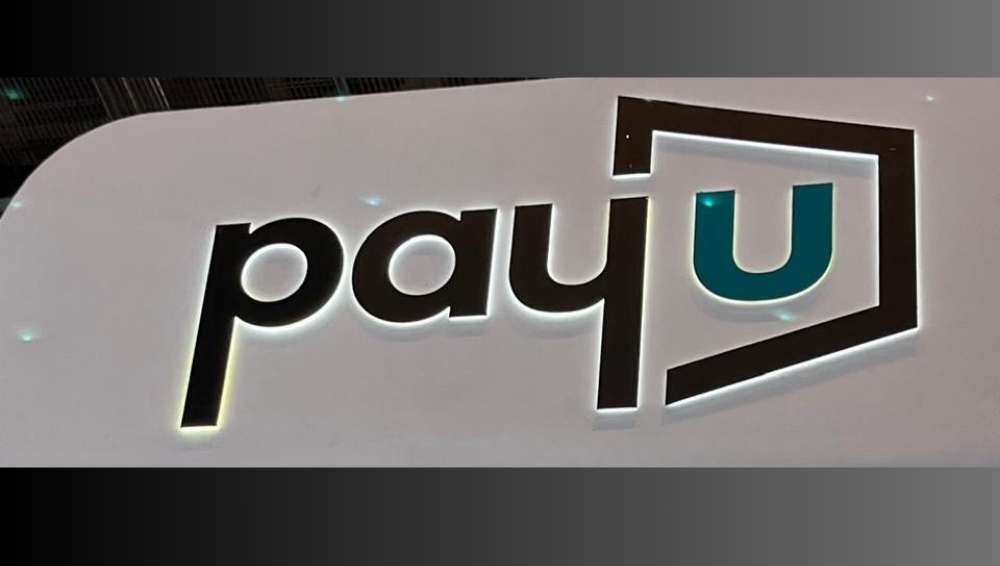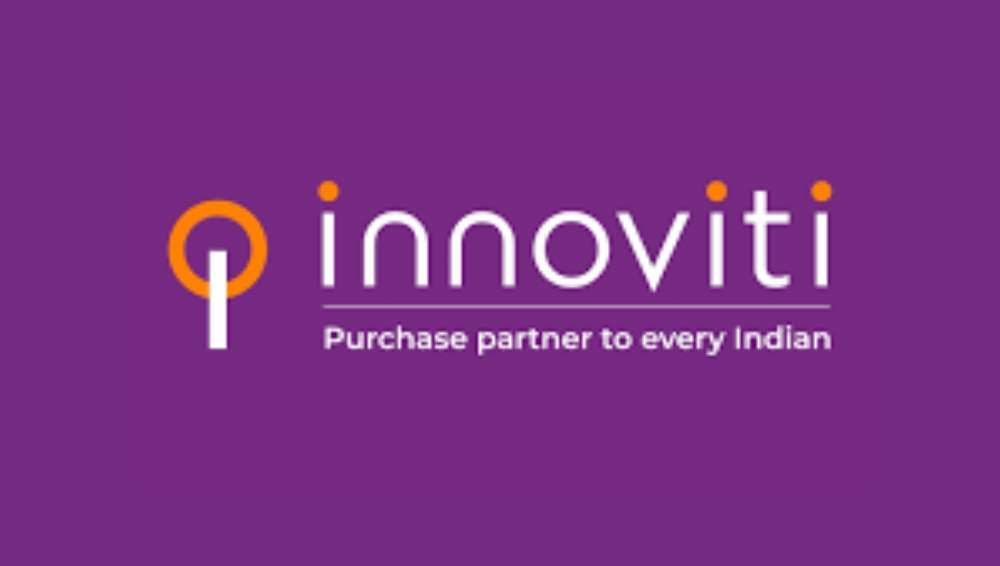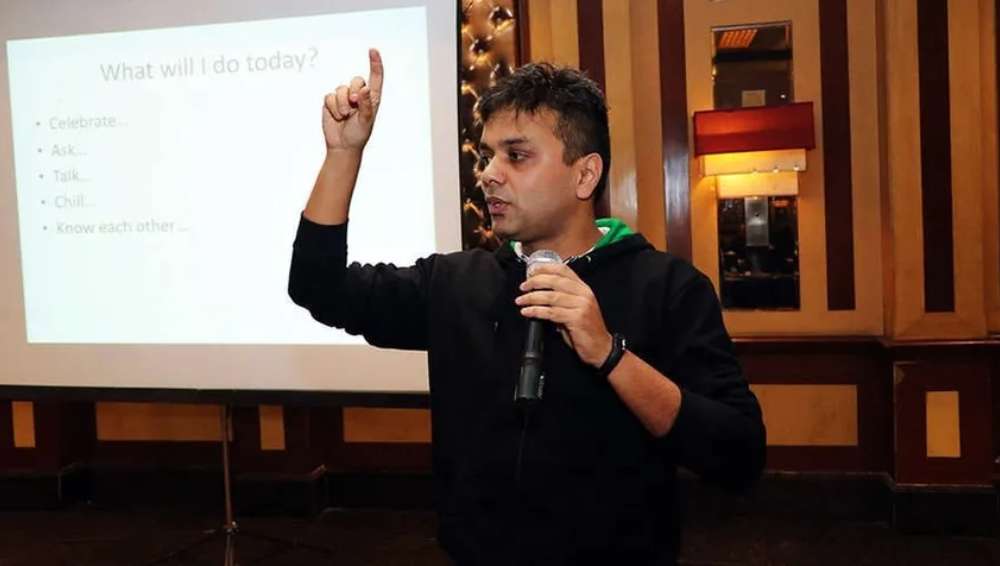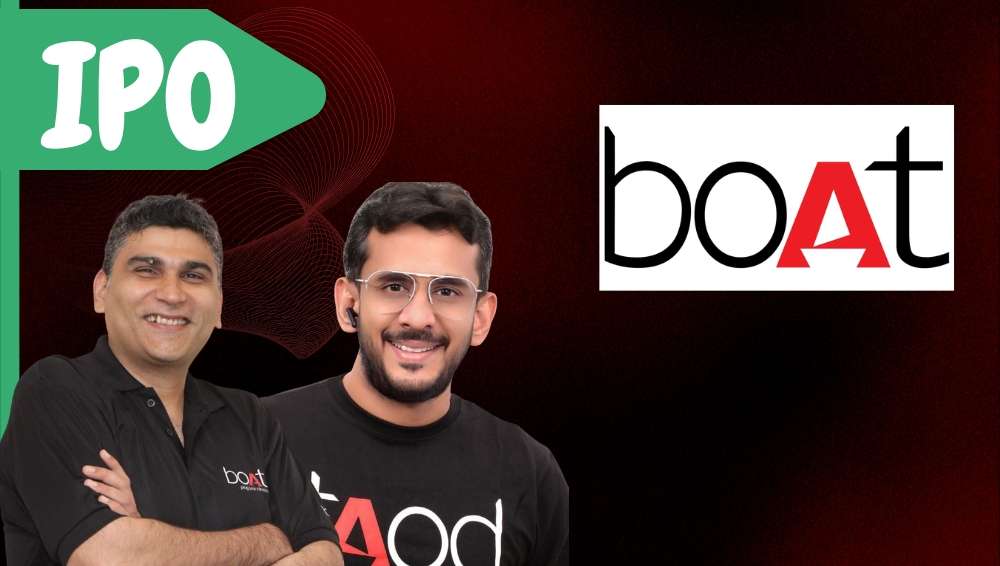Less than a month after Boat received the regulatory nod in September this year for its initial public offering (IPO) filed via the confidential route, the consumer electronics company was rocked by the announcement that its founders will no longer remain in their existing roles.
Sameer Mehta, co-founder and CEO of Imagine Marketing, the parent of Boat, stepped down to become executive director; and Aman Gupta, co-founder and chief marketing officer and the face of the company after his stint as a judge at reality TV show Shark Tank, transitioned to a non-executive director role.
While the management moved simultaneously to fill in the void by promoting the company’s chief operating officer (COO), Gaurav Nayyar to lead the company as CEO, the news of the founders receding into the background was enough to stoke negative publicity and closer scrutiny of its updated draft red herring prospectus (UDRHP) that was released to the public the following month.
But the public did not have to dig too deeply to find out that all was not well with the company.
Boat’s revenue from operations in the past two fiscal years have fallen albeit not sharply but enough to indicate that its growth has plateaued. Moreover, the company’s disclosure that it had turned a profit in FY25, raised a lot of eyebrows rather than a pat on back, as there have been instances in the ecosystem where tech startups report profit while filing their IPOs before swinging back to losses again.
Besides, the fact that Boat had slashed its IPO size to Rs 1,500 crore from Rs 2,000 crore when it had first filed papers for its public issue in 2022 has stirred the sceptics in people tracking the company.
“Boat’s topline appears to have hit a wall even as they are selling their profitability story. The flattening revenue trajectory reinforces a broader concern investors often have about D2C brands as to whether they have already hit saturation and where the next phase of growth will come from,” said an investor. “Besides, needless to say that the stepping down of the founders at this juncture is not a good sign. But it could also be a signal to investors to communicate that the company is engineering a change of guard to start afresh,” added the investor.
Concerns over Boat’s growth trajectory had begun when the company had filed its DRHP for its IPO for the first time way back in 2022. But the IPO plan was shelved by the company then. So, before we dive into the UDRHP, which was filed in October this year, let us look at the time when it had filed the DRHP in 2022 and the point where Boat may have peaked before it began to slide.
From Fireside’s early bet to Warburg’s $100 million and quick IPO filing
Just two years after its launch, Boat got its first institutional round of funding in 2018 from consumer-focused venture capital firm Fireside Ventures, which has backed other popular direct D2C brands like Mamaearth, Licious and Epigamia.
At that time Kanwaljit Singh, managing partner, Fireside Ventures, noted, “We look for brands that have identified white spaces… They have created a product line-up that caters specifically to how the Indian consumer wants to listen to music.” What Singh essentially meant was that Boat had identified a white space between the expensive global audio brands like Sony and JBL, and cheap unbranded imports to come up with an affordable but sophisticated looking product to cater to Indian sensibilities. Fireside had indeed picked a winner.
In less than three years, Boat attracted a massive $100 million funding from marquee private equity investment firm Warburg Pincus in January 2021. This investment also involved a secondary component that gave Fireside a partial exit from Boat, a relatively quick liquidity event for an early-stage venture capital firm.
Interestingly, the same year, Qualcomm Ventures, the investment arm of Qualcomm joined the cap table with a Rs 50 crore investment, underlining strong investor confidence in Boat. During Qualcomm Ventures’ investment, Boat’s co-founder Mehta had remarked that the company was entering the next phase of growth to deepen it R&D capabilities and further augment its efforts to manufacture products in India. It appeared that Boat could be India’s potential face of the Indian government’s pet Make in India project.
But things take time to build and even venture capital and private equity firms step in to invest with a 4–6-year horizon.
So, it was quite surprising when Boat filed its DRHP in January 2022, just a year after Warburg Pincus’ investment. This could have meant two things – either the company had scaled up rapidly to go public, or it was the only viable option at that time to give an exit to its investor, who was keen on offloading its holding.
As per the DRHP paper then, Boat’s proposed IPO size was Rs 2,000 crore. This comprised of a fresh issue of equity shares aggregating up to Rs 900 crore and an offer for sale (OFS) of up Rs 1,100 crore. Interestingly, among the external institutional investor only Warburg Pincus proposed to sell its stake in Boat. And the amount the private equity firm intended to raise via the OFS was Rs 800 crore, or nearly equivalent to the amount that it had invested just a year ago. Essentially it wanted to play safe by taking out the principal amount pronto.
Warburg Pincus’ plans to quickly exit came as a surprise as the company was growing. In FY21, its revenue from operations had doubled to Rs 1,313.71 crore from Rs 609.1 crore in FY20, as per its DRHP. In FY22, its revenue from operations again doubled to Rs 2,873 crore even as it remained in the red, as per filings with the Registrar of Companies.
But Boat’s first attempt at the IPO did not fructify into the company going public. There was no official statement why the IPO plans was shelved then although abandoning an IPO plan is not out of the ordinary and several companies have done in in the past.
Instead of the IPO, Boat went on to raise fresh capital in October 2022. Interestingly, the investment of Rs 500 crore came from Warburg Pincus and new investor Malabar Investments. So, from nearly taking out its principal within a year of its investment in Boat, Warburg Pincus ended up pouring more capital in Boat.
What followed was a period of silence on the IPO front until Boat finally revived its IPO plans this year. And with its UDRHP public now, concerns over its revenue degrowth has heightened and the key management overhaul casts a shadow over its IPO.
Trimmed IPO size
A smaller IPO size also means that the OFS portion has reduced. So, Warburg Pincus, which invested in Boat via its vehicle South Lake Investment Ltd, will be selling only up to Rs 500 crore worth of shares against the originally planned Rs 800 crore. It probably had to make room for other investors, as jumping in on to sell the shares via the OFS this time are also Fireside and Qualcomm, which in 2022 had not proposed to offload their stakes.
Notably, while Mehta has proposed to sell shares worth only Rs 75 crore in the IPO as compared to the originally planned Rs 150 crore in 2022, Gupta on the other hand has proposed to divest shares worth Rs 225 crore versus Rs 150 crore.
The company’s fresh issue has also been cut to just Rs 500 crore from Rs 900 crore earlier. What is interesting to note is the reason for the deployment of the net proceeds towards funding working capital needs, branding and marketing and general corporate purposes which makes this IPO more of a liquidity event for the investors.
The smaller IPO size has clearly raised questions about demand and valuation, coming at a time when the company’s growth has plateaued and investor sentiment has turned cautious.
Financials
According to the UDRHP, Boat’s revenue from operations has been sliding in the past two fiscal years even as it has reported a net profit ahead of filing the papers for its IPO.
Its operating revenue has declined from Rs 3376.79 crore in FY23 to Rs 3117.67 crore in FY24 and to Rs 3073.27 crore in the fiscal ended March 31, 2025. The company attributed the fall primarily due to decline in revenue from wearables by around 40% to Rs 330.41 crore in FY25 from Rs 550.29 crore even as audio continues to be the main driver of its overall business.
In fact, its audio segment grew in single digit at just 5.16% to Rs 2,586.04 core in FY25 from Rs 2,451 crore in FY24.
However, during the first quarter (April-June) of this fiscal FY26, the company’s revenue from operations rose to Rs 628.10 crore from Rs 567.22 crore in the same period in FY25. Despite this quarterly operating revenue growth, the company underlined that it “may be unable to sustain our past growth or achieve growth in revenue from operations or accomplish our growth strategies”. The company’s uncertainty over the trajectory of its operating revenue is bothersome as it indicates that the growth of the company may have peaked.
Notably, its revenue from online channels have accounted for over 70% of its revenue from operations in the last three fiscals as well as in the first quarter (April-June) of this financial year FY26. The company has also significantly grown its offline footprint over the past few years, reaching more than 12,000 offline retailers across 25 states and five union territories, with a distribution network comprising 112 distributors (general trade and modern trade) as of June 30, 2025. It has entered into both exclusive and non-exclusive agreements with its distributors for distribution of its products but has not entered into long-term agreements.
While its revenue grappled to grow, the company has reported a net profit of Rs 61 crore in FY25 against a net loss of Rs 79.68 crore in FY24 and a net loss of Rs 129.45 crore in FY23. Interestingly, the company also posted a net profit of Rs 21.35 crore in the April-June quarter of this fiscal year FY26 as compared to a net loss of Rs 31 crore in the same period last fiscal year. However, it noted that it may not be able to sustain its profit margins, which may affect its profitability.
“Our ability to remain profitable depends on a variety of factors, including our ability to generate consistent revenue growth, manage operating costs, respond to competitive pressures, and adapt to changing market dynamics,” noted Boat. While this is a common refrain adopted my all companies filing DRHP, in Boat’s case it sounds ominous as its revenue growth has stalled.
Numbers manipulated?
Alarm bells over the company posting a profit ahead of filing the IPO has also grown in view of the company’s own admission in the UDRPH that its Statutory Auditors’ audit report on its audited financial statements contains certain unfavourable remarks, observations and other legal and regulatory matters.
One of the issues flagged by the audit report was that the quarterly returns or statements filed with banks or financial institutions were not in agreement with the books of the company’s account for the last three fiscal years through FY25. This highlights serious lapses on the part of the company to keep furnishing inaccurate data not just once but for three successive financials years. It also casts aspersions on the company that the erroneous data was submitted deliberately to conceal something.
In addition, the audit report also raised questions about remuneration paid to the directors of the company, in excess of the limit laid down under Section 197 of the Companies Act, 2013, for FY23. As per the UDRHP, founders Gupta and Mehta were given remuneration of Rs 2.5 crore each in FY23 while other key management personnel Vivek Gambhir took Rs 2.95 crore and Ankur Sharma got Rs 1.32 crore. Gupta and Mehta continued to get remuneration of Rs 2.5 crore in the subsequent financial years as well.
While the company in the UDRHP noted that it has taken steps to rectify some of the observations including paying excess remuneration and submitting inaccurate numbers, it is hard to brush them aside as it readies to become a public entity.
Make in India
Boat’s claims about building locally in line with the Indian government’s flagship Make in India program needs to be taken with a pinch of salt.
In the UDRHP the company notes, “We have taken significant steps towards ramping up our manufacturing footprint in India, in line with government’s “Make in India” initiative and have transitioned 75.83% of our manufacturing to India.” In line with the Make in India goal, the company also formed a JV with Dixon Technologies -- Califonix Tech and Manufacturing Pvt Ltd – in FY22 for manufacturing and developing Bluetooth-enabled wireless personal audio products.
Boat’s UDRHP shows it has offshore subsidiaries. Its unit KaHa Technology (Shenzhen) Co. Ltd in China is engaged in the business of development and sales of software and hardware of intelligent electronic products; technology development, technical consultation and technology transfer of intelligent electronic products; export of goods and technologies. This indicates that Boat continues to rely on the Asian country not just for imports but for building its products as well.
While it could be true that the reliance on China may have minimised relatively over the years it is still far away from being self-sufficient. So, this does cast a doubt on Boats claims that it has transitioned 75.83% of its manufacturing to India.
In a LinkedIn post, Jitendra Chouksey, CEO at health and fitness platform FITTR, vented that it is “getting tiring trying to explain people why you can’t manufacture the smart rings in India.” A smart ring is a wearable device which Boat is also involved in making. Chouksey revealed that trade shipment data of companies like Boat speak for itself. According to data firm Trademo, China, Hong Kong and Vietnam are the top regions Boat’s parent Imagine Marketing is importing from. In 2025, Boat imported $37.16 million worth of goods from China. In 2024, the value was slightly higher at $39.96 million.
Chouksey concluded that Make in India is a sham and that there are “zero” Make in India electronics companies in India.
Besides, the audit report mentioned above had also raised concerns about the material uncertainty in relation to the capabilities of two of its subsidiaries -- Kaha Pte. Ltd and Imagine Marketing Singapore Pte. Ltd -- to meet their existing liabilities for FY2024 and FY23.
Still, the effort of Boat to become self-reliant and upgrade its tech capabilities cannot be entirely discounted. The UDRHP revealed that through “boAt Labs”, it has developed its own proprietary in-house technology stack comprising of hardware, software and application layers. As of June 30, 2025, it had 101 engineers at boAt Labs that “continue to work towards enhancing the designs and the products we develop.” But again, its drop in its R&D spends in FY25 to Rs 39 crore from Rs 52 crore in FY24 and FY23 raises doubt about its commitment to innovation.
Competition and attrition
The UDRHP states that Boat operates in a competitive market and is up against a mix of global audio brands, large electronics manufacturers, fast-growing Indian digital-first labels, Chinese smartphone makers, and even private labels run by e-commerce marketplaces. It also acknowledges competition from both organised and unorganised players, including those selling unbranded products.
Despite the intense competition, it highlights that it was ranked number one in India among branded personal audio companies with a market share of 26% in value terms and 34% in volume terms, citing Redseer report. In terms of value, in the branded personal audio category, Boat was followed by Apple and Oppo, and Samsung, Boult, Realme, Nexxbase and Sony, as per the UDRHP.
However, the rise of other homegrown companies like Boult cannot be downplayed as it is also reportedly raising venture money. Boult reportedly doubled its revenue to Rs 800 crore in FY25. In fact, Boat had a long-running trademark dispute with Boult with Boult Audio rebranding to GoBoult in August this year. The legal matter is pending as per the UDRHP.
Intense competition also means customers are spoilt for choice which leads to pricing pressures for consumer companies that could hurt their growth. To counter this problem, Boat had launched its sub-brand -- Nirvana -- for premium priced audio experience in 2023 as part of its strategic initiative to diversify its product portfolio and target new customer segments. There is no break up in the UDRHP with regards to contribution from Nirvana besides saying that it has helped Boat achieve a market share of 20% by value among branded personal audio brands.
Meanwhile, while employee benefits have been increasing in the company, attrition rate at the company has also been on the rise in the past three fiscal years. The attrition rate increased to 34.18% in FY25 from 28.14% and 27.09 percent in FY24 and FY23, respectively. It’s not out of the ordinary for attrition rate to rise in growth-stage startups but if people are leaving because they no longer believe in the company’s future, that’s not churn, that’s a warning.
In a media interview in 2020, Boat’s co-founder Gupta had said that ‘people had started writing Boat’s obituary even before it was born’. But Boat has withstood the test of times in a competitive market. So, credit where it is due, as the company has come a long way and it is a visible brand today. But its next phase will depend on how well it navigates a crowded, price-sensitive market where competitors not strategy often dictate the terms.















